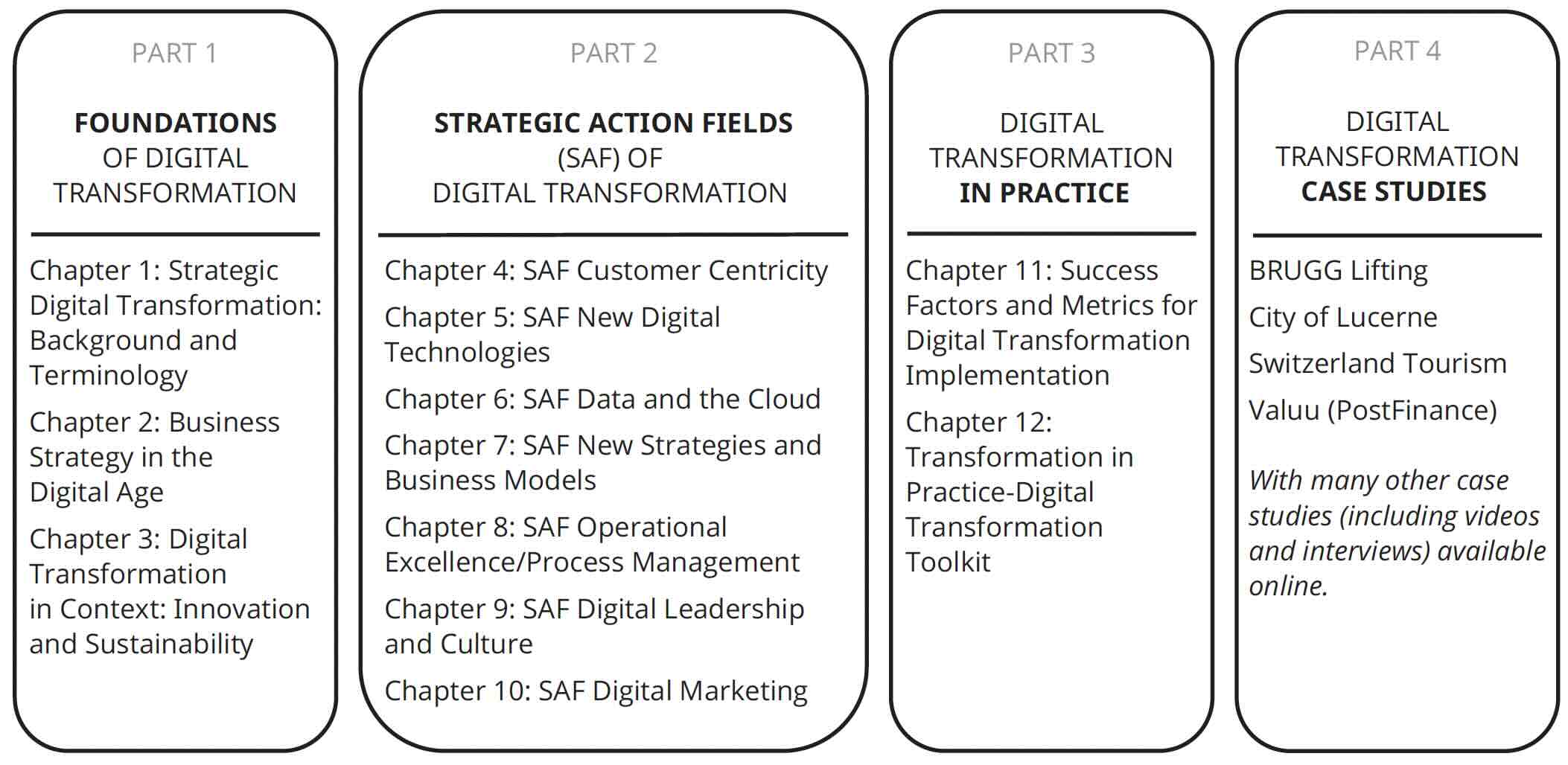The Book
This digital transformation textbook will provide students with a learning experience that is academically rigorous, integrating insights from the latest research on the strategic digital transformation of organisations, while supporting the practical application of this knowledge with the ACT (Analyse, Create, Transform) method and the Digital Transformation Toolkit.
The ACT method and toolkit are the results of the multi-year and ongoing digital transformation research agenda of both authors, involving over 12,000 participants in design science research projects between 2016 and 2025. The textbook and its Digital Transformation Toolkit will support students and future managers in understanding the practical realisation of digital transformation of organisations to allow the development of competitive advantages for the digital age, while enabling this to be done in a manner that reflects a sustainable approach.
Students (guided and supported by motivated lecturers) arguably have two jobs to be done while at university, namely (1) to acquire the contemporary state-of-the-art knowledge in their chosen domain of specialisation, and (2) to show that they can communicate and apply this knowledge. This textbook addresses these opportunities by actively embedding a validated and practice-oriented method for the realisation of strategic digital transformation.
In 12 chapters, students are provided with contemporary knowledge about and understanding of strategic digital transformation of organisations across seven distinct strategic action fields (SAF) of digital transformation, while developing their capability to address real world business challenges through the application of the digital toolkit.
The textbook’s structure supports this integration of academic rigour and practical relevance to enable an approach to teaching strategic digital transformation that is unique and prepares students for using the knowledge and experience they will acquire in their future careers.
Strategic Digital Transformation: Theory and Practice is a suitable textbook for a full semester (and a semester long project), with the text structured into four parts and 12 chapters:

Each chapter is structured as follow:
- Learning goals;
- An opening case (e.g., a pre-read) to introduce the topic in class;
- The main text with an introduction, core chapters, illustrations, tables, and information boxes;
- One or multiple case studies with student questions;
- Exercises (for individual or group-based completion, also linked back to the opening case);
- Further suggested literature; and
- References.
Lecturers have the choice to work on a single-case organisation that will be selected during the first class (for a semester long project), or to work with the recommended cases included in the text and online resources, end of chapter guidance and suggested questions/tasks/support knowledge from different chapters to be applied to cases repeatedly (and thereby incrementally deepen the understanding of the cases and the connections between topics and issues – see the Appendix for the collection of cases studies, with additional cases available online). In Chapter 12, the ACT method and the ten project steps for digital transformation will form the basis for a final project assignment/assessment (which, optionally, can be linked to group presentations on the last day in class).
The Digital Transformation Toolkit includes several templates and checklists which allow the transfer from theory into practice. The templates and case studies are available online. Finally, ancillary online resources are available, including:
- The Digital Transformation Toolkit with workshop templates and checklists;
- Videos and Podcasts for each chapter (for instance, to prepare for class or as a summary for students who could not attend class);
- Videos from case organisations (case introductions, promotional clips, and interviews); and
- Slide decks with the most important concepts, tables, and illustrations for each chapter.
Please contact the authors if additional ancillary resources are required, or if you would like to contribute a digital transformation case study.